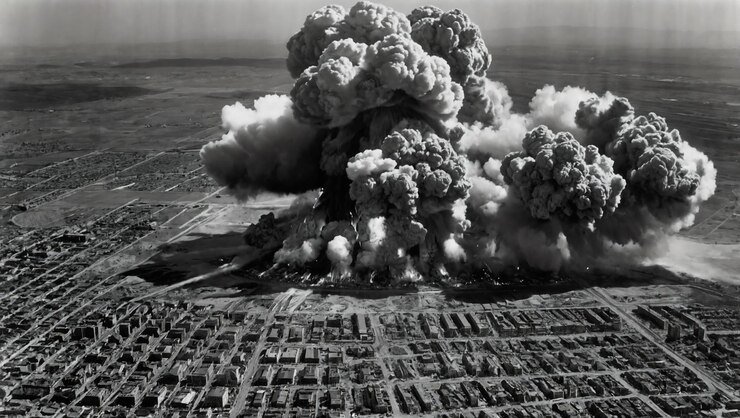Setting the Context for the 1993 Baytown Explosion
Baytown, Texas, a city nestled along the Gulf Coast, has long been a significant hub for the petrochemical and oil industries. With sprawling industrial complexes and refineries, Baytown plays a pivotal role in powering America’s energy sector. However, this industrial might also brings inherent risks. On April 5, 1993, Baytown became the site of one of the most impactful industrial accidents in Texas history—the Baytown explosion. Measuring 4.3 on the Richter scale, the explosion left an indelible mark on the region and became a focal point for discussions about industrial safety, emergency preparedness, and environmental impact.
This blog will recount the events leading up to and following this historical tragedy, examine its environmental and economic repercussions, and reflect on its lasting legacy for industrial safety.
The Day the Earth Shook: Recounting the Explosion
April 5, 1993, started as an ordinary day in Baytown’s industrial district. Unbeknownst to the workers and residents, a disaster was brewing. At approximately 10:20 a.m., an explosion ripped through one of the petrochemical complexes operated by Exxon. The blast resulted from a hydrocarbon flash fire ignited by an operational mishap, which led to an uncontrolled release of flammable gases.
The sheer magnitude of the explosion was astounding. Measuring 4.3 on the Richter scale, the blast’s tremors were felt as far as 10 miles away. Windows shattered, buildings shook, and alarmed residents flooded emergency phone lines, fearing the worst. A towering fireball rose into the sky, creating a scene of chaos and destruction. Tragically, the explosion claimed the lives of several employees and injured many others on-site, solidifying this moment as one of the darkest days in Baytown’s history.
The Aftermath: Environmental and Economic Implications
The immediate aftermath of the Baytown explosion was devastating. Beyond the loss of life and injuries, the surrounding environment bore the scars of the accident. Air quality plummeted due to the release of toxic gases, raising concerns about long-term health impacts for local residents and workers. Additionally, nearby waterways experienced contamination, further raising alarms from environmentalists and regulatory bodies.
Economically, the explosion crippled local industries for months. Refineries experienced operational delays, supply chains were disrupted, and the cost of repairs further strained the affected companies. Locally, the region faced employment interruptions, as many workers were displaced by the destruction at the site.
The disaster also brought significant scrutiny from environmental watchdogs and sparked broader discussions about industrial regulation in the Gulf Coast region. Citizens and advocacy groups demanded accountability, urging stricter adherence to safety protocols to prevent similar disasters.
The Response and Recovery Efforts
Emergency responders acted swiftly in the wake of the explosion, displaying extraordinary courage and coordination during those critical hours. Firefighters and hazardous materials teams battled the blaze for hours, working tirelessly to contain it. Medical teams tended to the injured, while law enforcement worked to secure the area, preventing onlookers from entering dangerous zones.
Exxon, the operator of the affected facility, launched an internal investigation in tandem with regulatory authorities to determine the cause of the explosion. The company pledged to bolster safety protocols, invest in equipment upgrades, and conduct more rigorous employee training to mitigate risks.
The road to recovery was long but marked by resilience. Local businesses, residents, and officials worked together to rebuild both the physical damage and public trust. The explosion became a rallying cry for enhanced industrial safety measures and stricter government oversight.
The Legacy of the Baytown Explosion
Although three decades have passed since the 1993 Baytown explosion, its legacy endures. For the industrial sector, it served as a sobering reminder of the potential risks associated with large-scale operations. The incident prompted changes in safety regulations and increased public awareness of industrial accidents.
On a community level, the event fostered a greater appreciation for emergency preparedness. With lessons learned from the Baytown explosion, local entities in Texas and beyond implemented stronger disaster response frameworks. Facilities adopted more stringent maintenance protocols and prioritized investments in advanced monitoring systems to detect and address potential hazards before they escalate.
Importantly, the Baytown explosion also contributed to the broader conversation about finding sustainable and environmentally conscious approaches to industrial production. It underscored the need for balancing operational efficiency with environmental and community safety.
Lessons Learned and Remembering the Baytown Explosion
The 1993 Baytown explosion is not just a tragic moment etched in history—it’s a story of resilience, accountability, and progress. It reminds us of the critical importance of enforcing safety protocols, investing in advanced technology, and preparing communities to respond effectively to crises.
History buffs, policymakers, and industrial leaders alike should study events like the Baytown explosion to learn how communities and enterprises can work together to prevent future tragedies. Such moments provide invaluable lessons about the costs of complacency and the importance of proactive risk management.
